Delft Blauw
Delft Blue and White Tulipière - Delft Blauw - c1950s
Delft Blue and White Tulipière - Delft Blauw - c1950s
Couldn't load pickup availability
This exquisite Delft Blauw tulipière is a captivating piece that carries forward centuries of Dutch artistry and floral tradition.
With three individual openings, this hand-painted vase is designed to elegantly support single-stemmed flowers, displaying each bloom with grace—a style born from the 17th-century European fascination with tulips.
Initially, tulipières were conceived during the Dutch Golden Age, a period marked by innovation in the arts and trade, when tulips were highly sought after and their intricate vases became status symbols among the wealthy elite.
Hand-painted with classic blue and white detailing on both front and back, this tulipière showcases the unmistakable charm of traditional Delftware. The aged crazing across the surface, characteristic of its likely 1950s origin, gives it an additional layer of authenticity and appeal. While the piece bears unidentified marks on its base, adding a touch of mystery to its provenance apart from the most recent owner, it stands as a true homage to historical Delft pottery, where craftsmanship and beauty seamlessly intertwine.
With its timeless elegance, this Delft Blauw tulipière is a perfect choice for those looking to enhance their collection or add a sophisticated accent piece steeped in history and tradition. Whether filled with delicate blooms or displayed on its own, this unique piece will bring a taste of Dutch heritage and the allure of tulip history into your home.
- Material: Ceramic
- Style: Delftware
- Technique: Hand-painted
- Place of Origin: Netherlands
- Mark: unidentified mark: triangle and NS
- Date of Manufacture: 1950s
- Condition: Perfect condition, some crazing
Dimension:
Height: 23 cm | 9 in
Width: 8 cm | 3.1 in
Depth: 6 cm | 2.3 in
Share
- Worldwide Shipping
- Secure Packaging
- Loving Curation
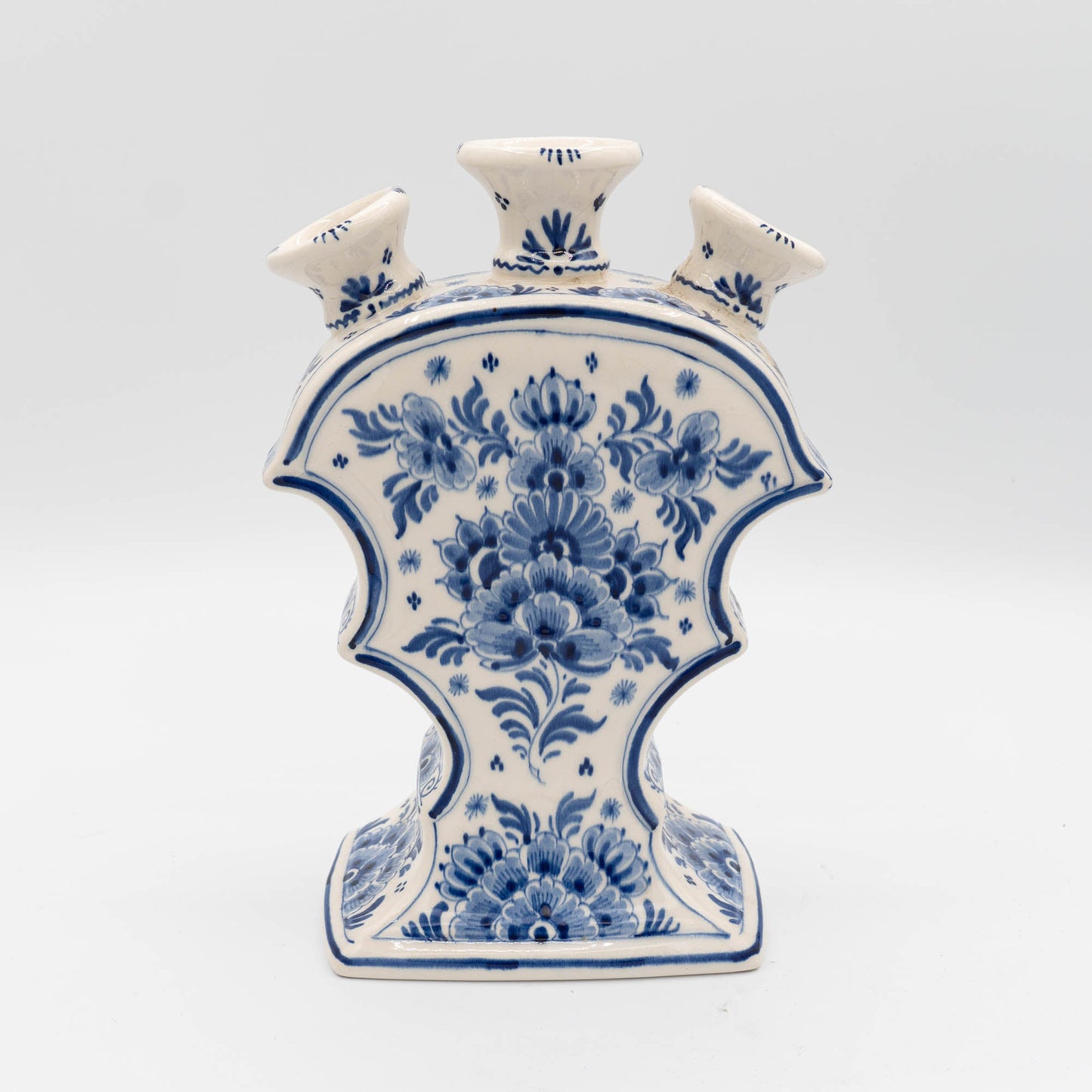
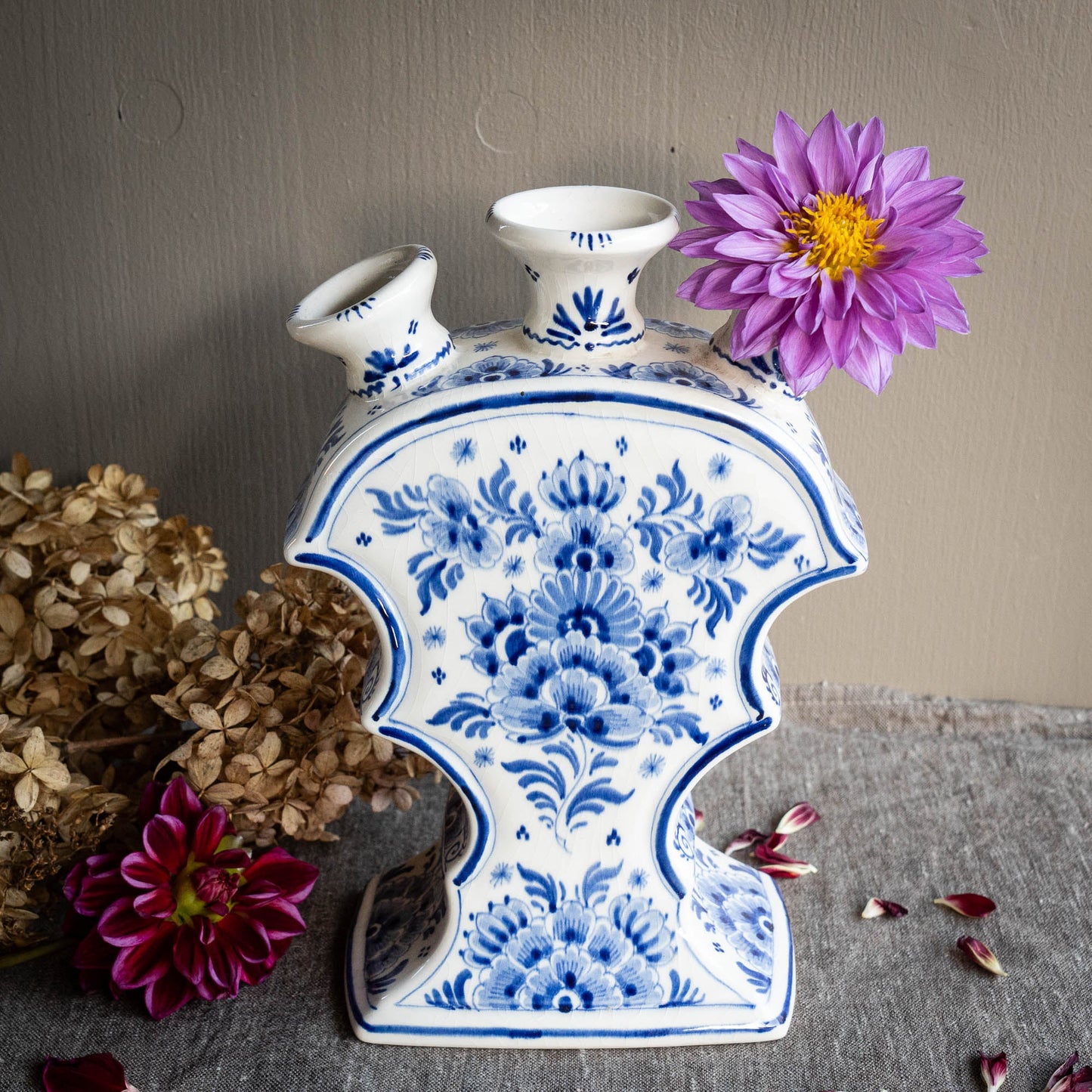
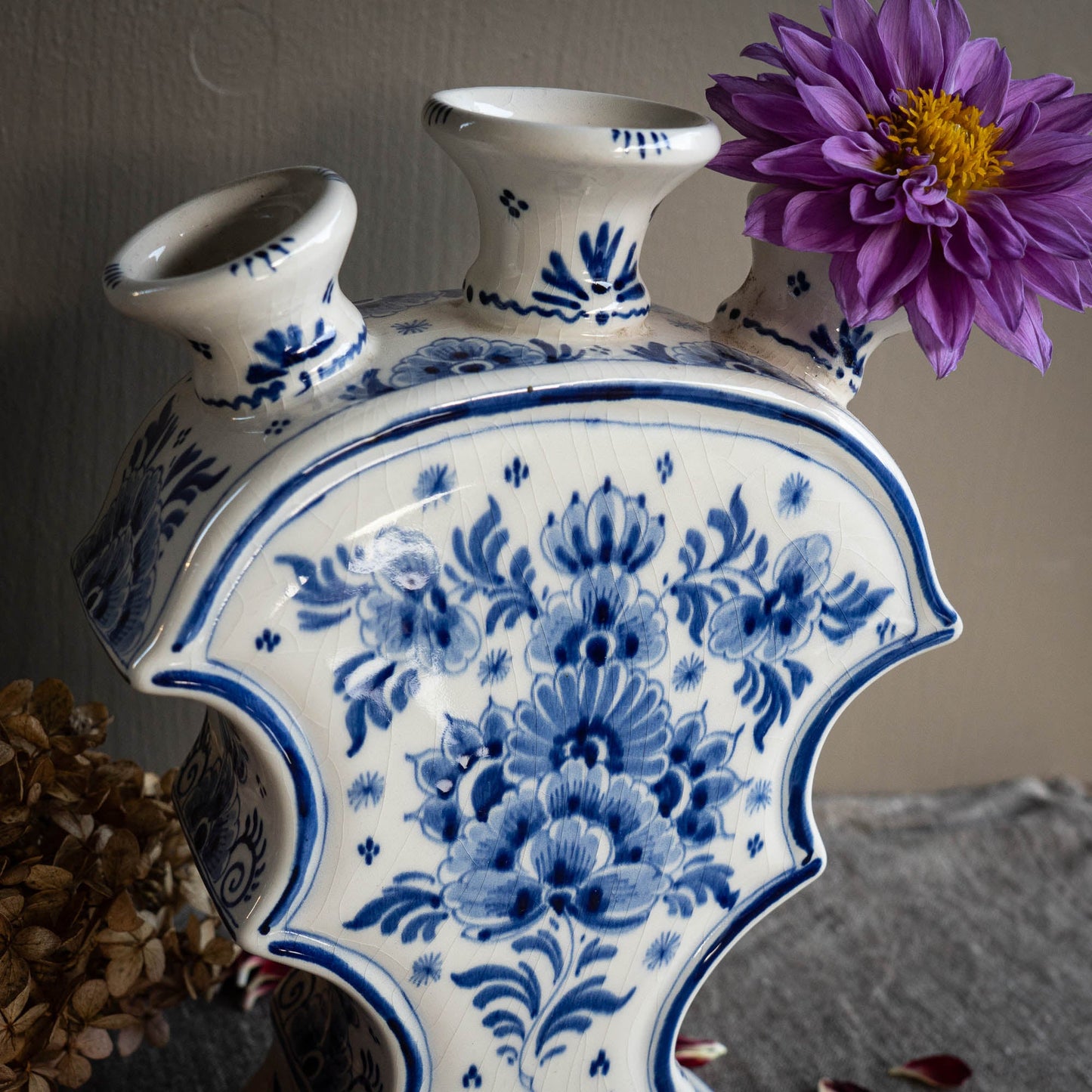
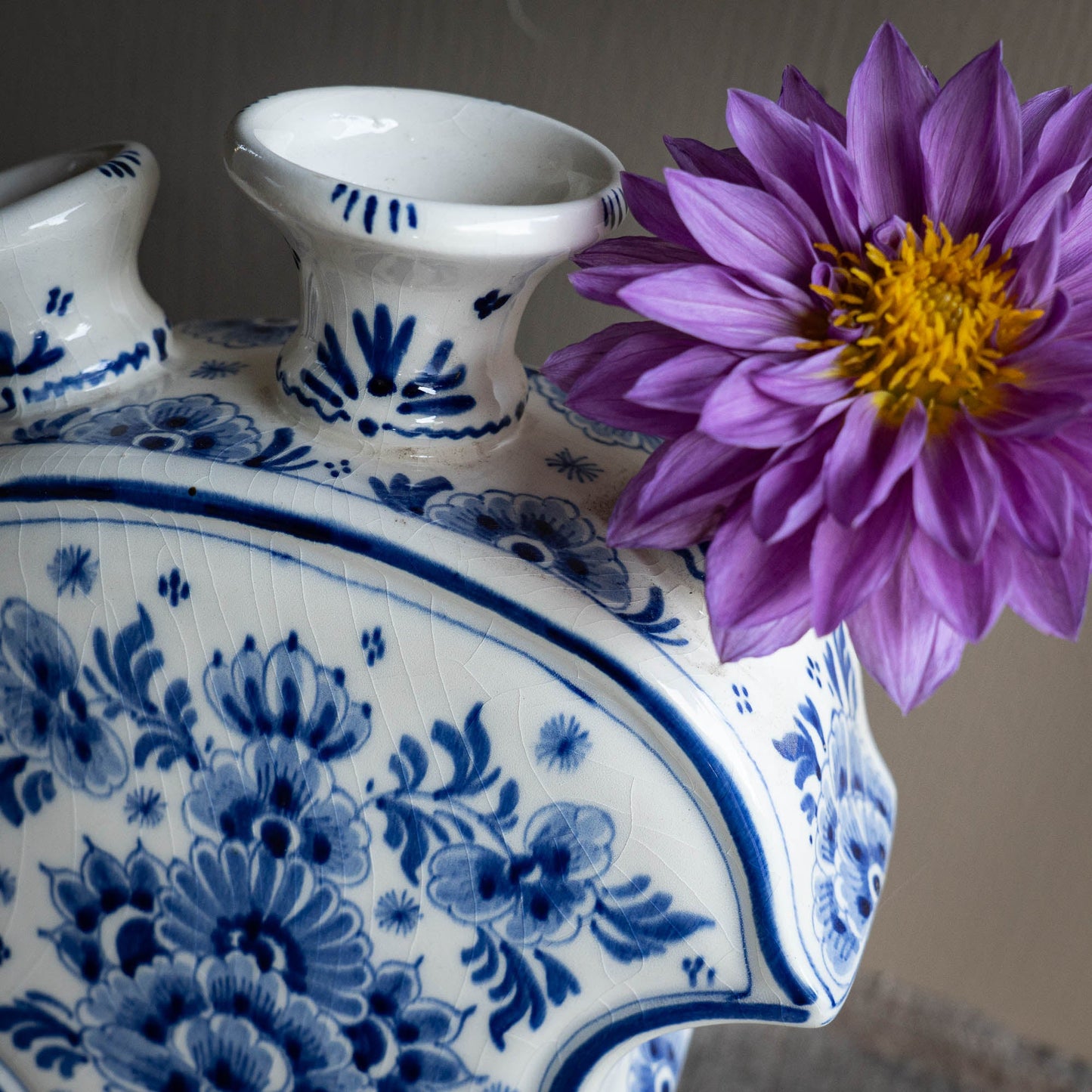
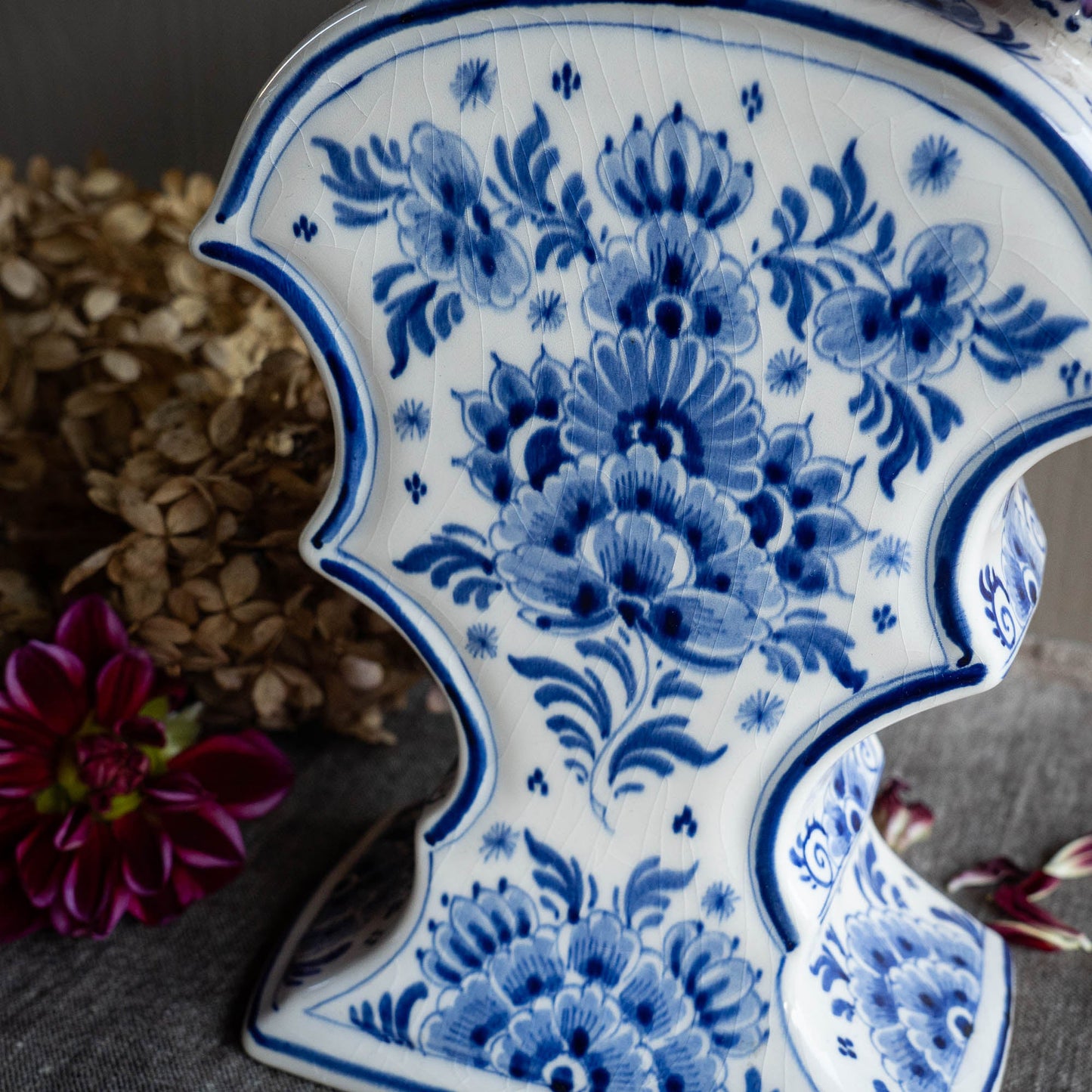
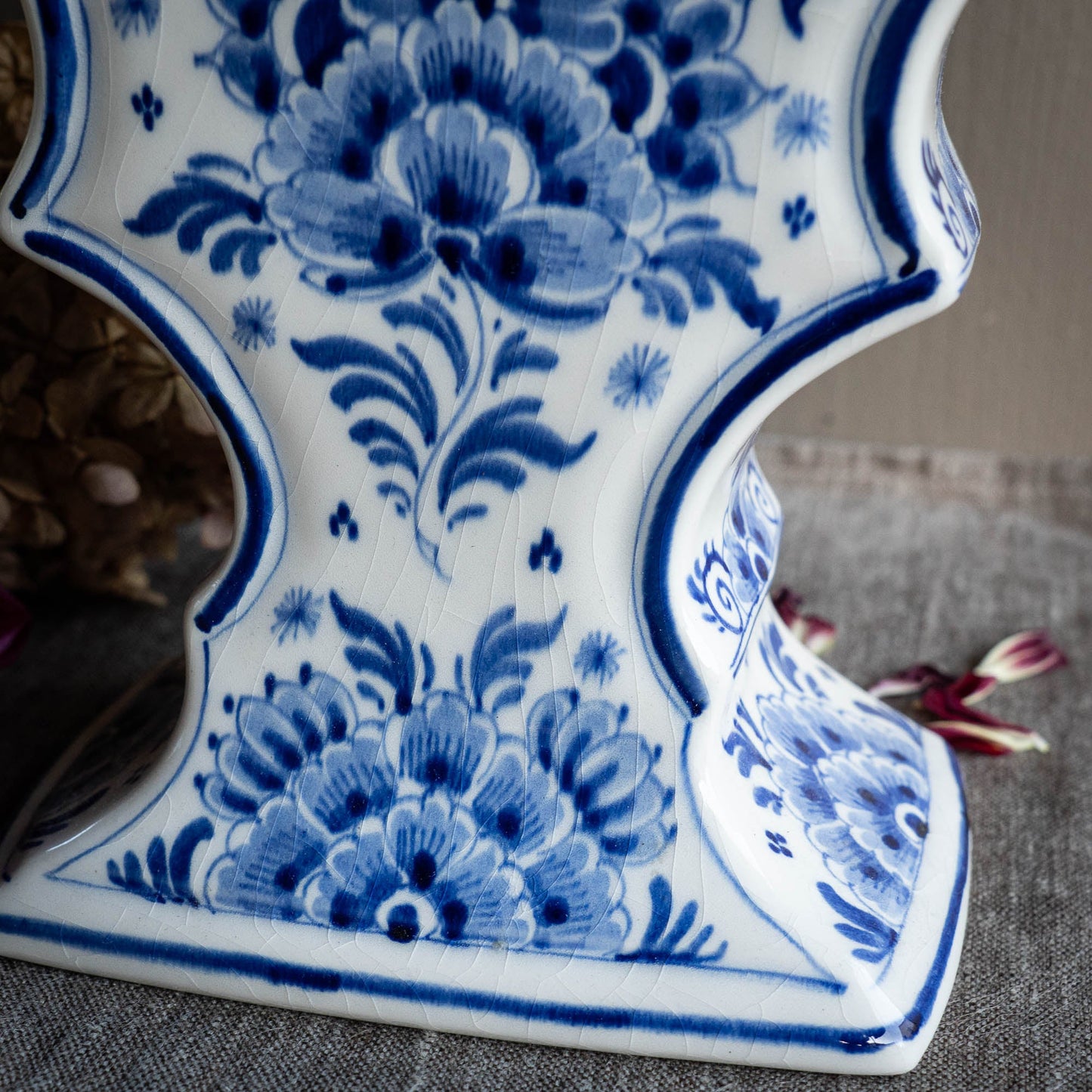
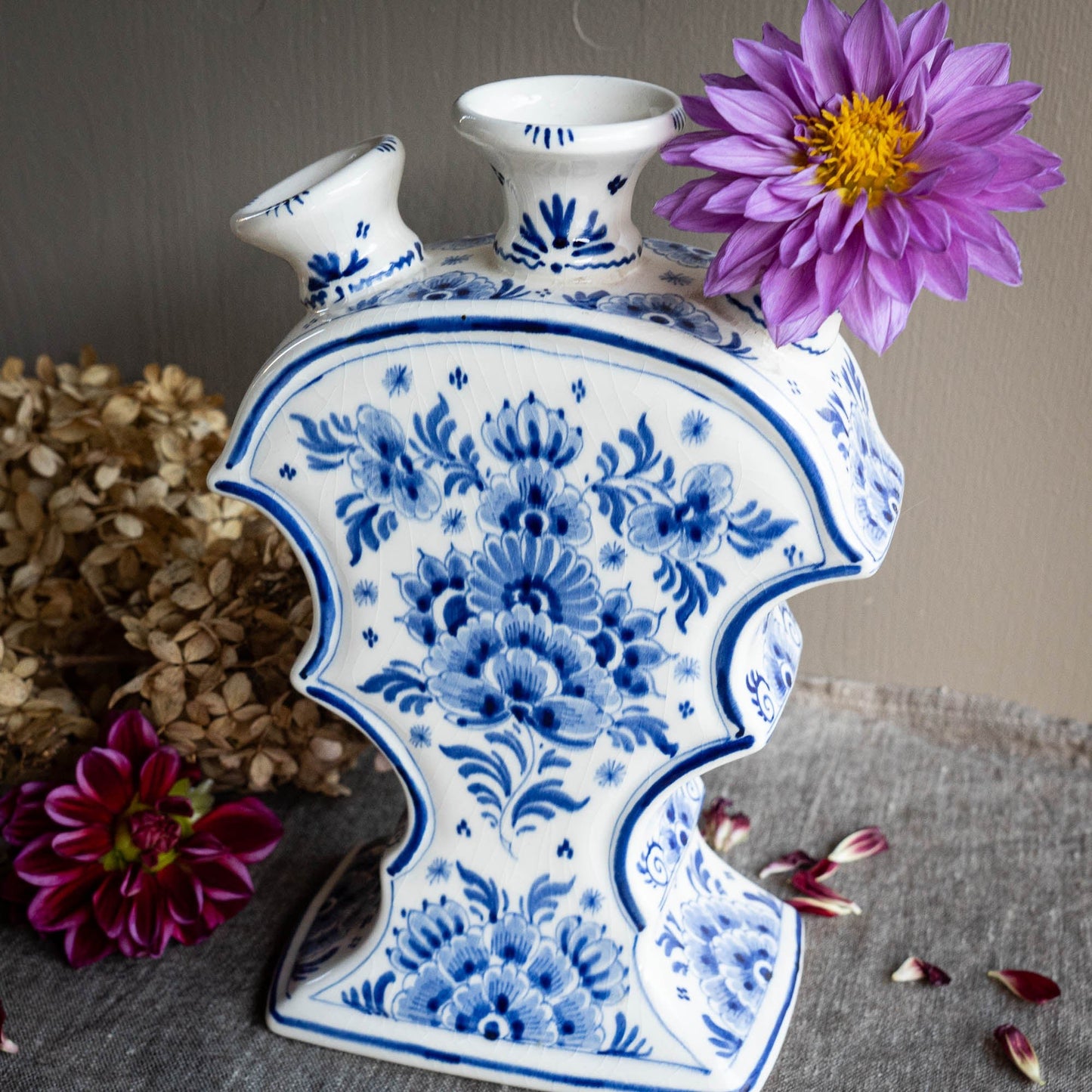
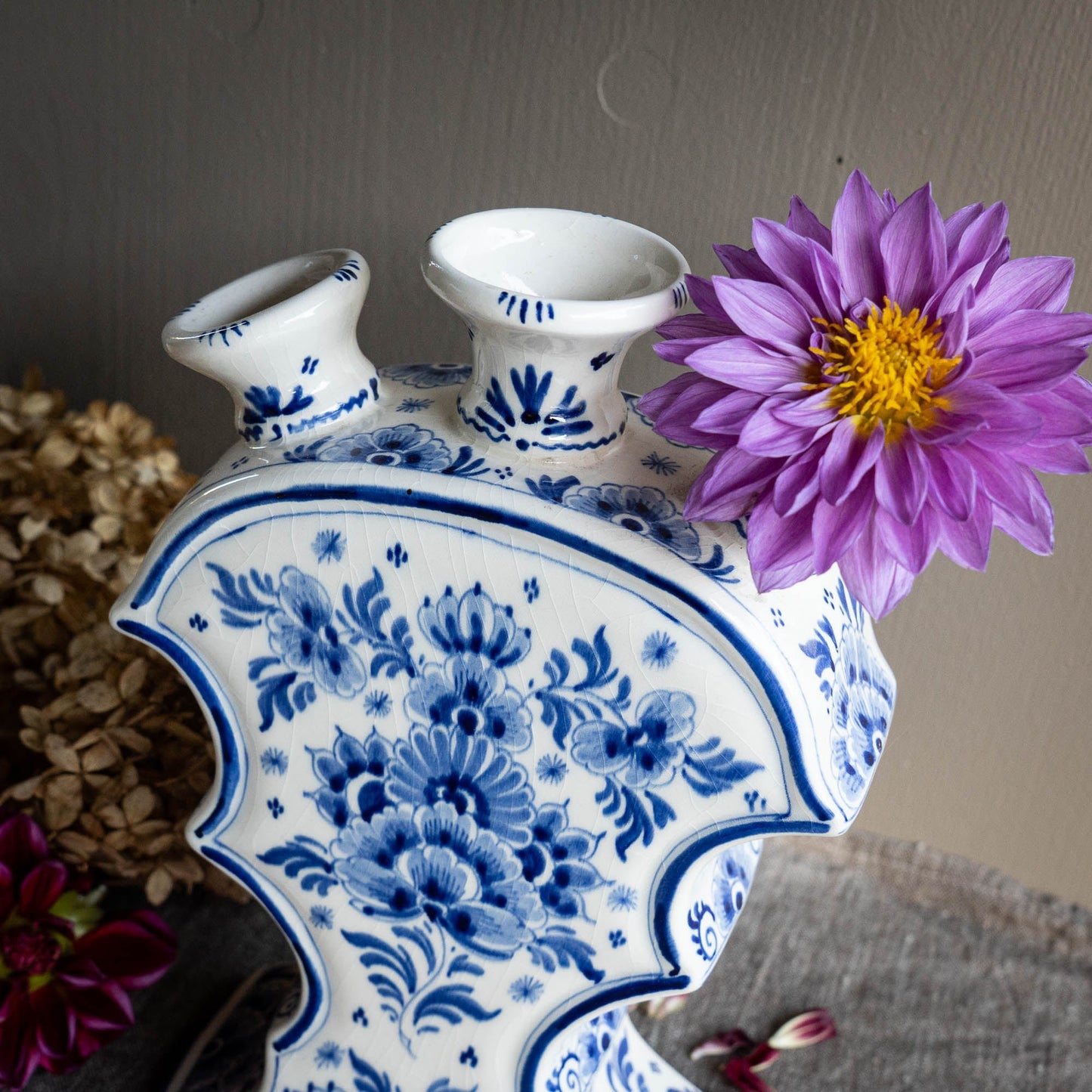
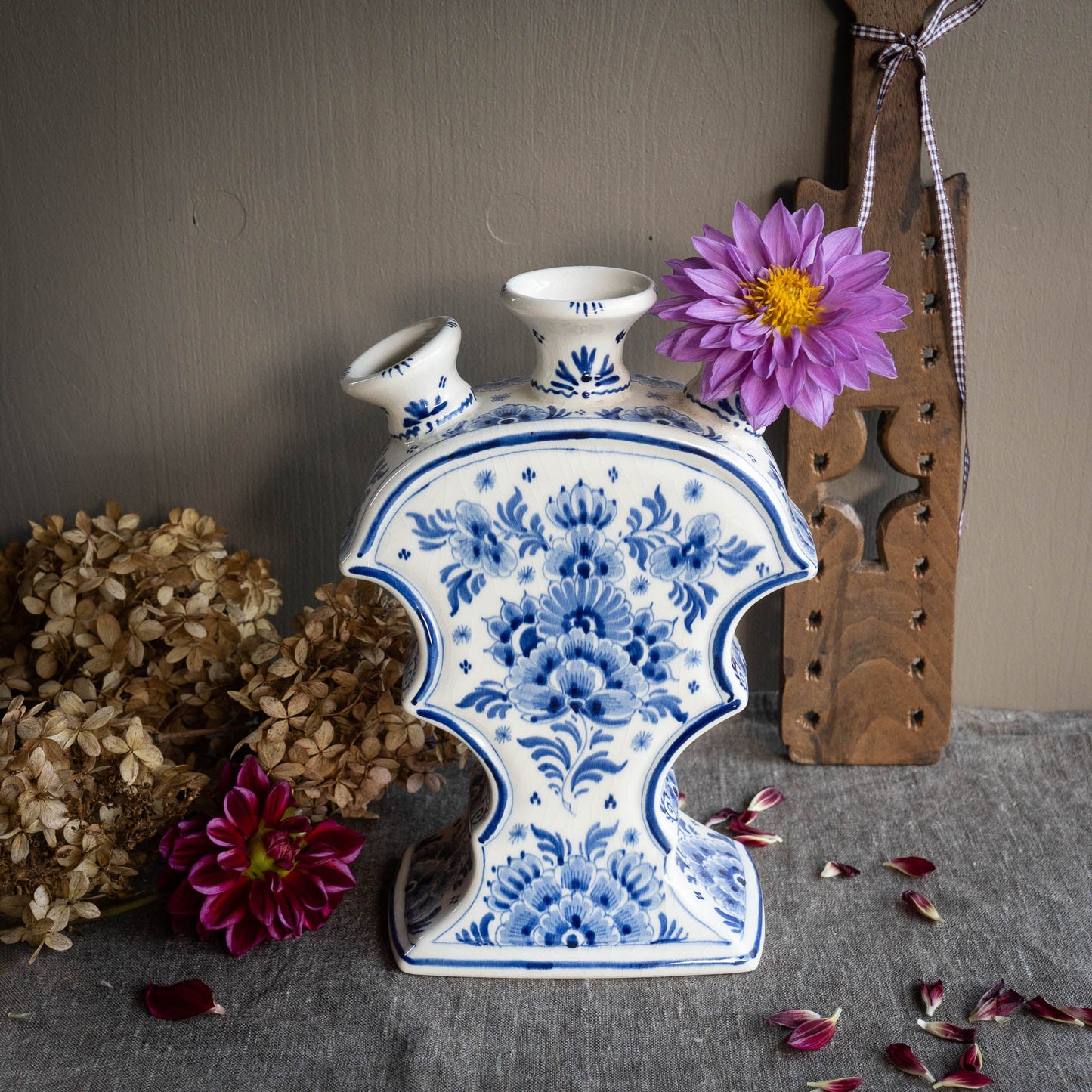
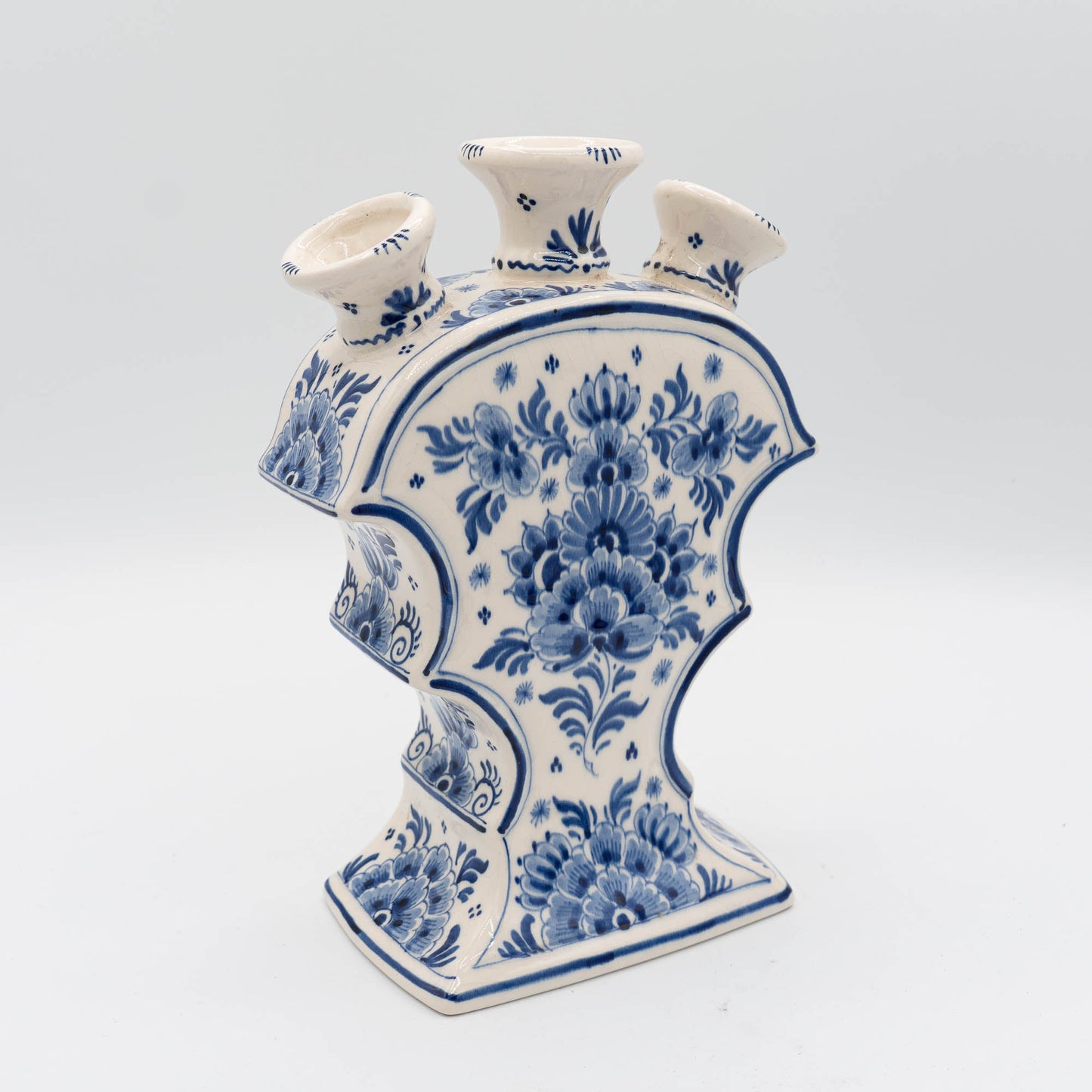
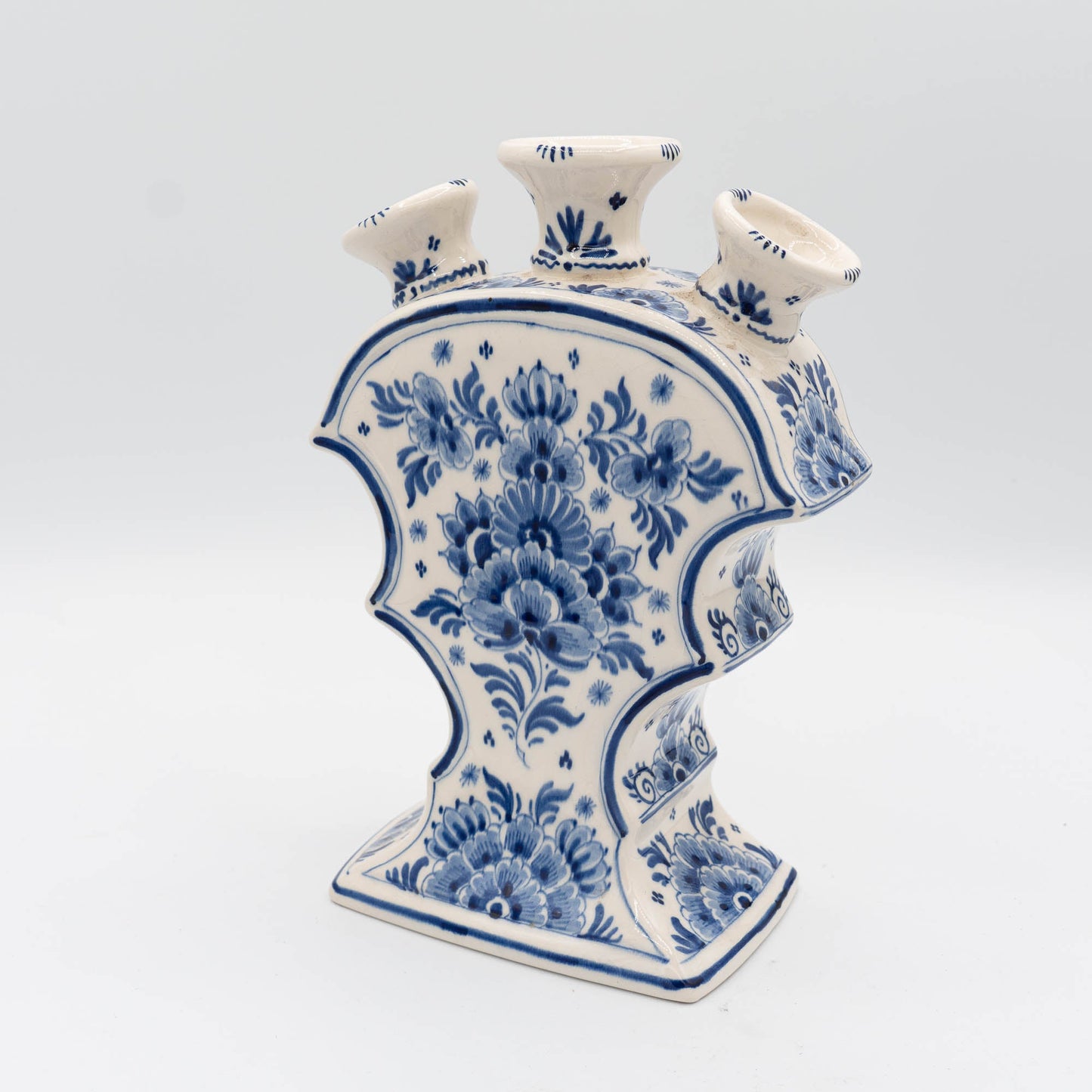
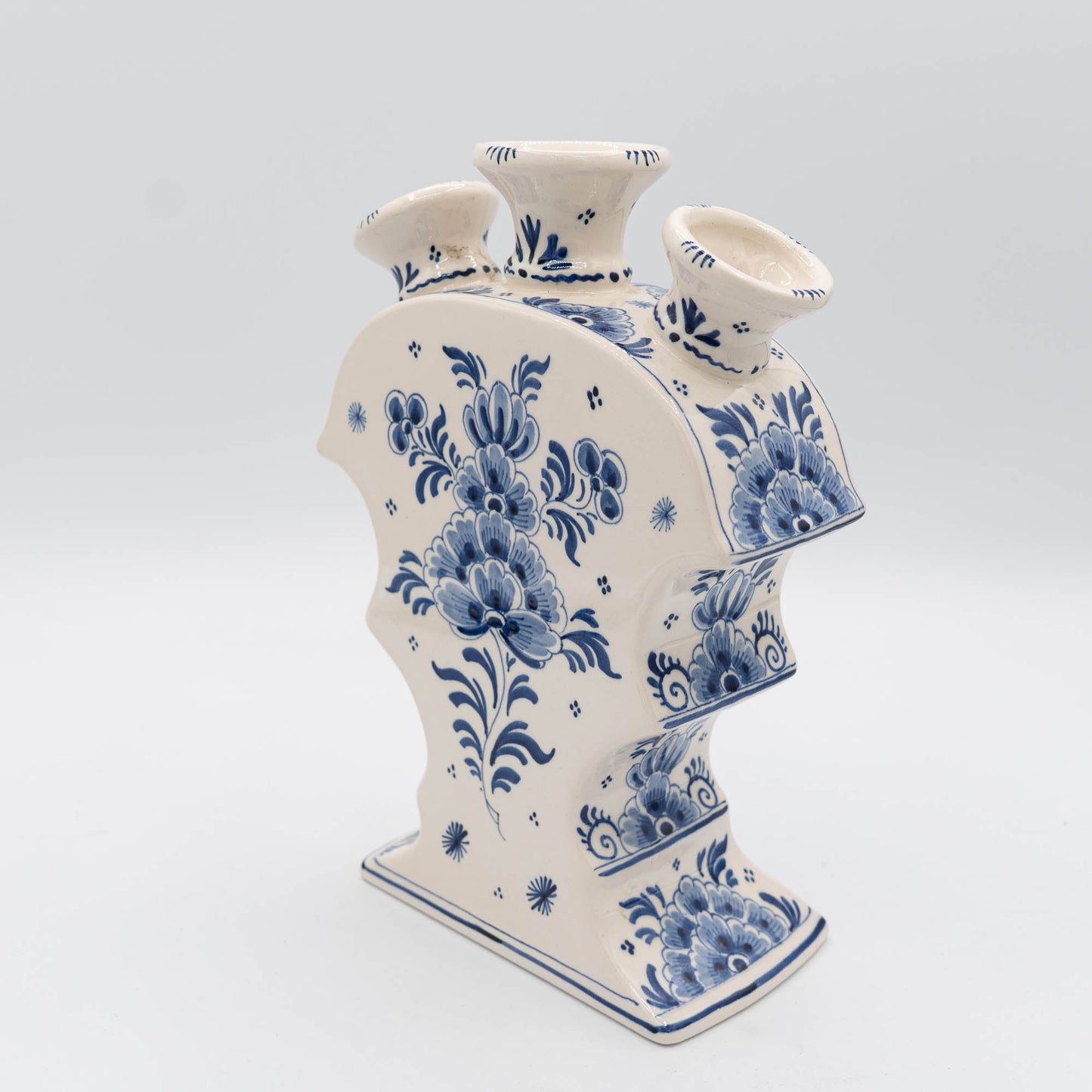
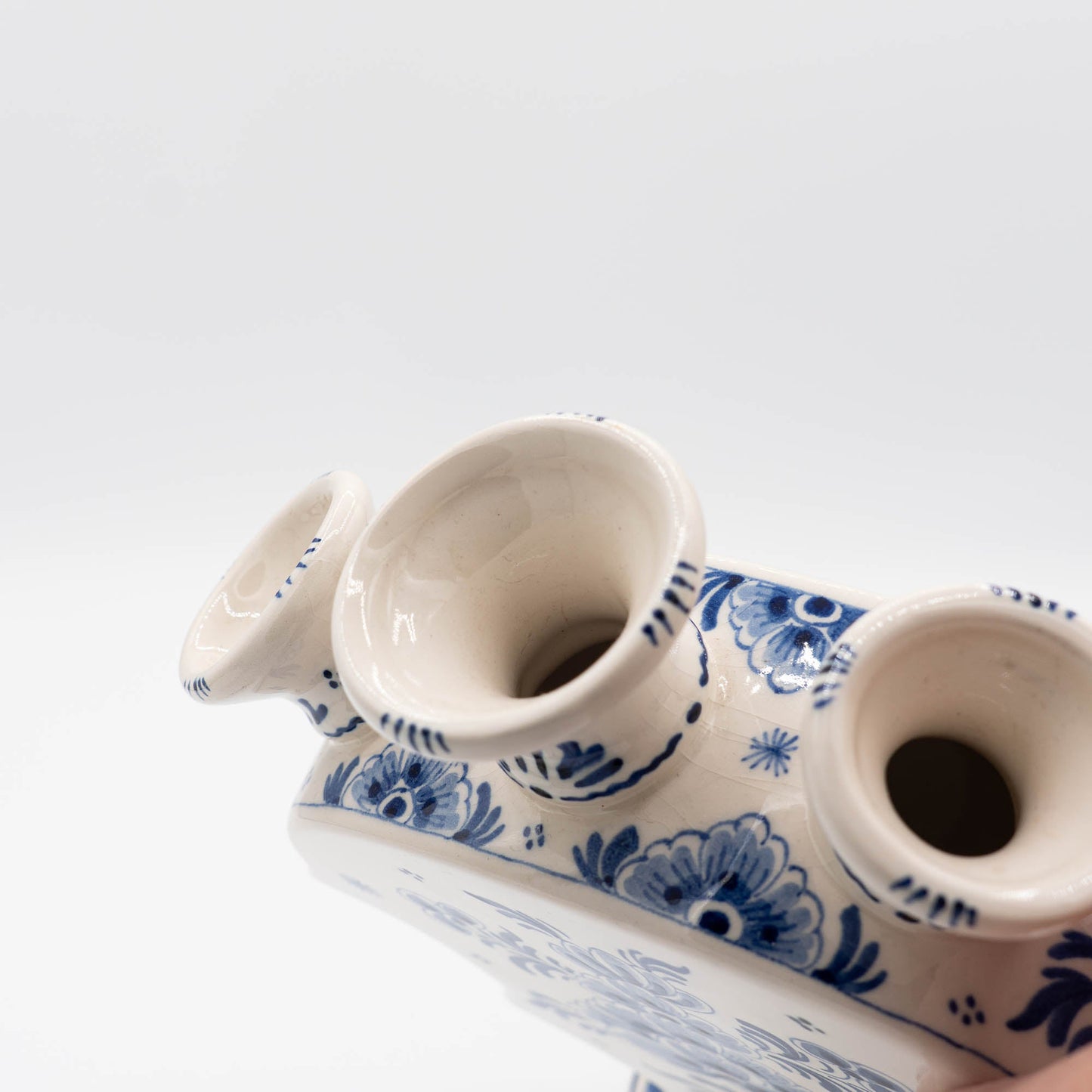
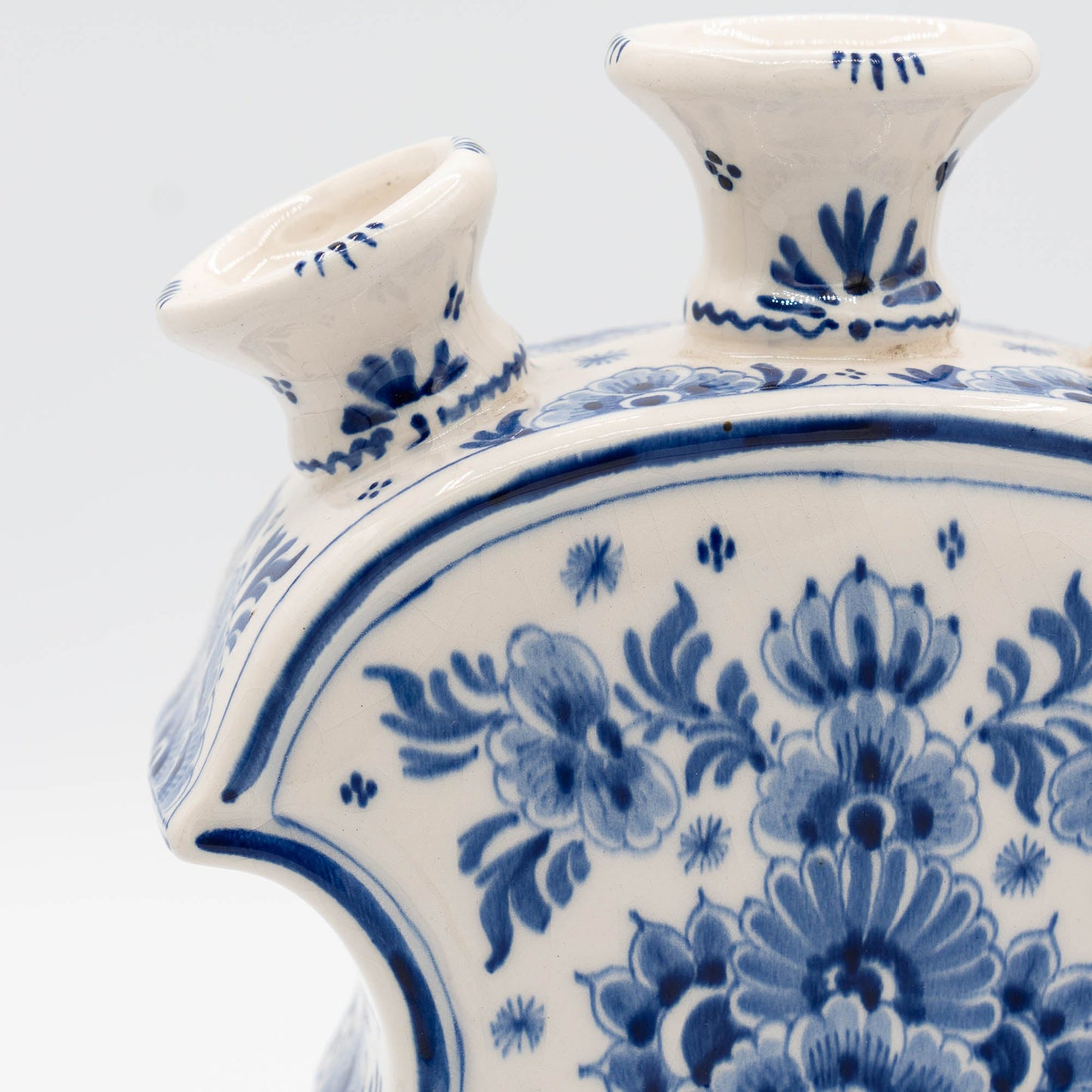
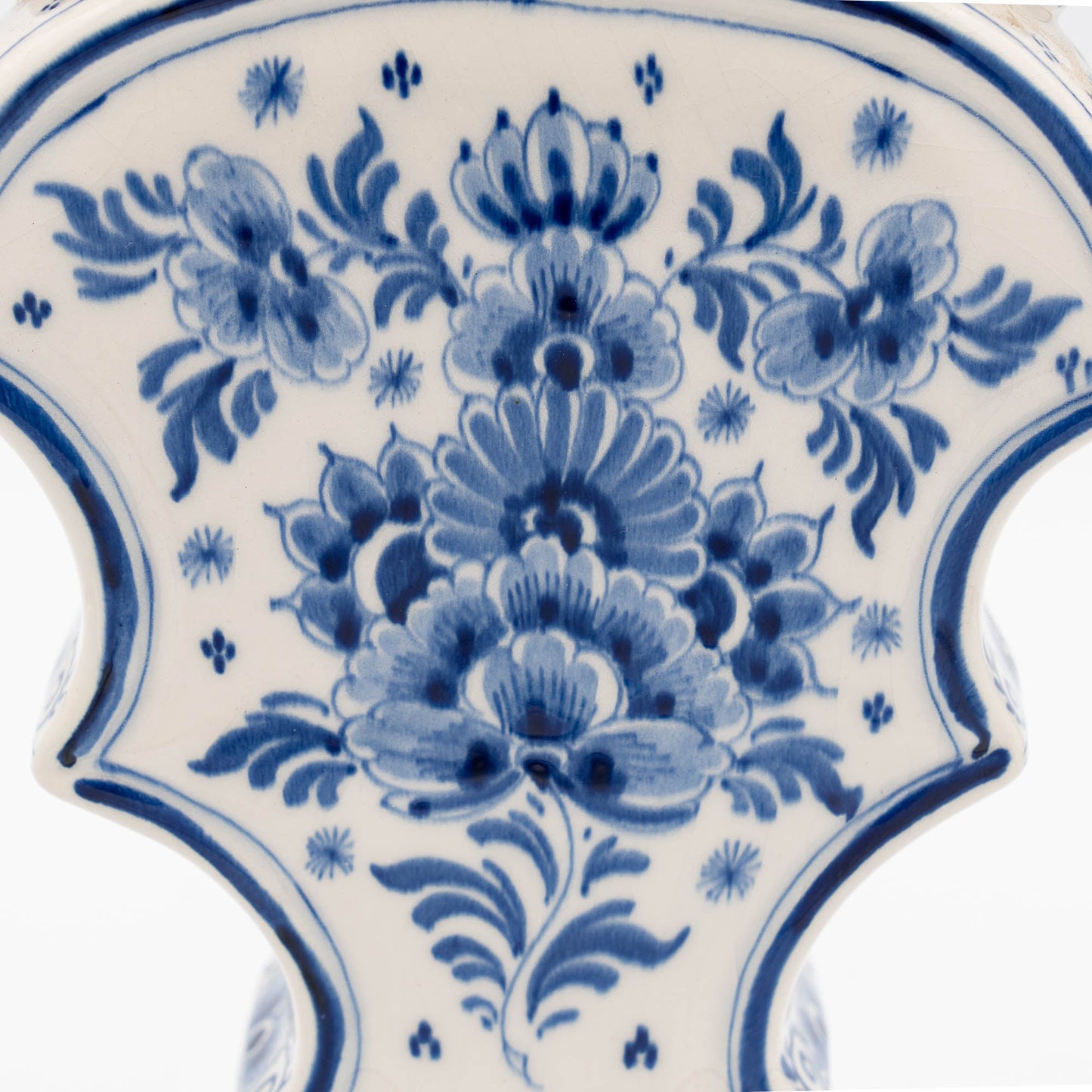
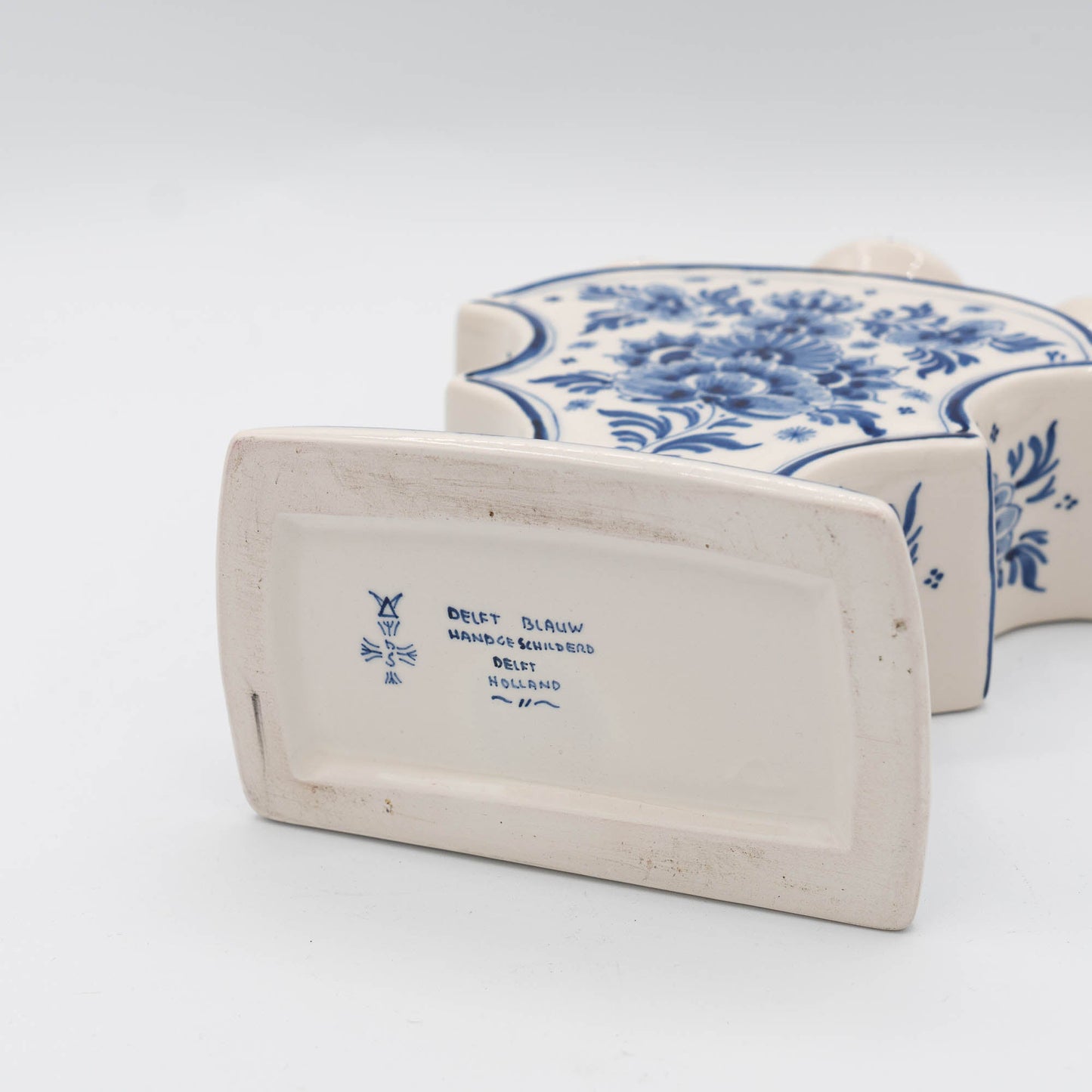
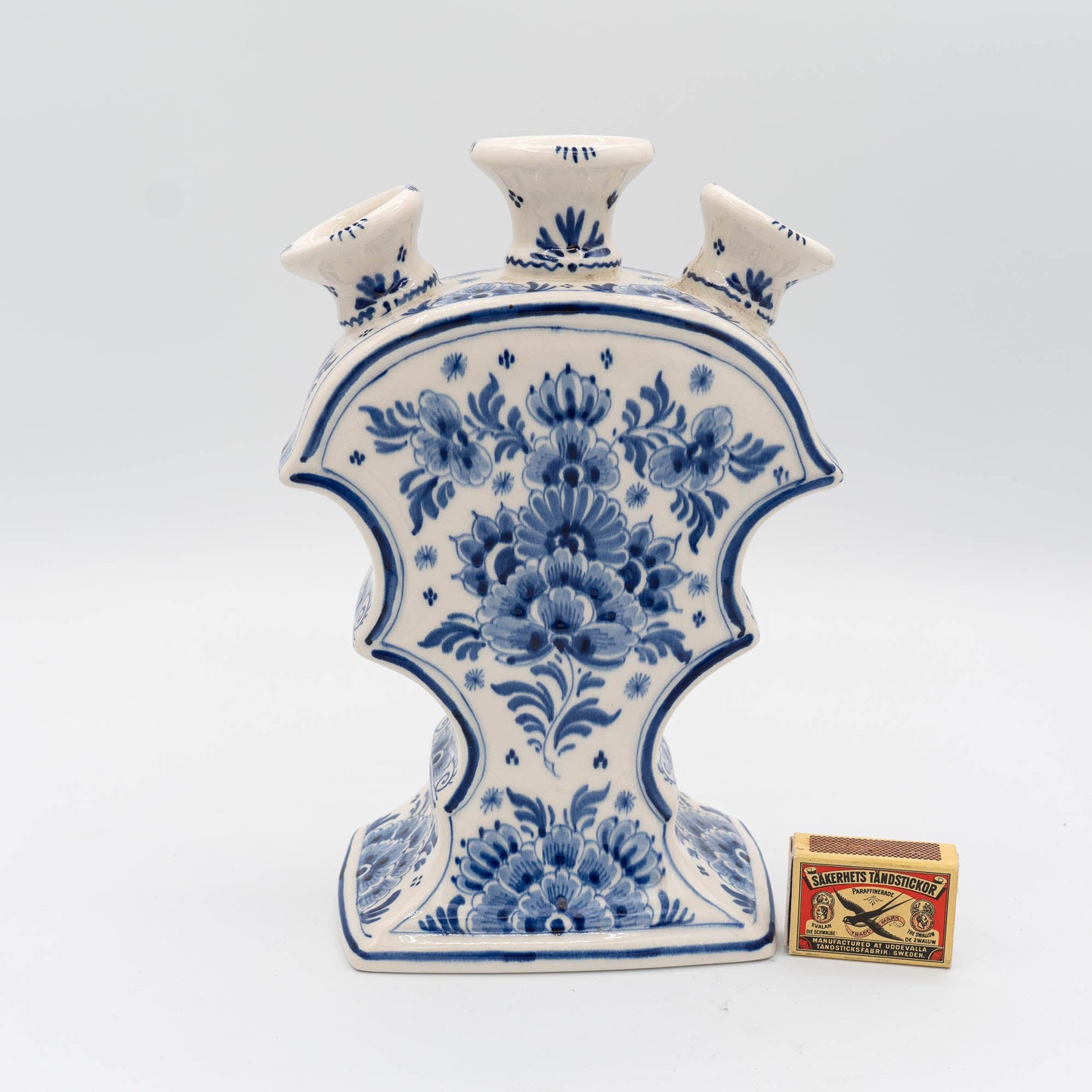
Origin & Maker
Delftware, also known as Delft Blue, is a renowned style of tin-glazed pottery that originated in Delft, Netherlands, during the 17th century. Its distinctive blue and white aesthetic was inspired by Chinese porcelain, which had become popular in Europe due to increasing trade with Asia. When the supply of Chinese porcelain temporarily halted during the Ming Dynasty, Dutch potters filled the gap by developing their own version. They applied tin glaze to earthenware, creating a smooth white surface that could be painted with intricate cobalt blue designs.
Initially, Delftware artisans replicated Asian motifs, but over time, they developed their own unique styles, often depicting Dutch landscapes, flowers, and pastoral scenes. As the craft grew, Delft became the epicentre of production, housing around 30 pottery factories at its peak. These pieces were highly prized across Europe, leading to widespread imitation and influencing ceramics styles in England, Germany, and beyond.
Today, Delftware remains an iconic symbol of Dutch art and craftsmanship. Authentic pieces are still crafted by traditional methods in the Netherlands, preserving centuries-old techniques and designs. Collectors and admirers worldwide cherish these works, which reflect a blend of cultural exchange, history, and exquisite artistry.
Blog posts
View all-

A Serendipitous Morning at the Rue de Bretagne ...
There are few joys in life that match the thrill of stumbling upon a hidden treasure, and for me, flea markets hold that magical allure. One of my favourite flea...
A Serendipitous Morning at the Rue de Bretagne ...
There are few joys in life that match the thrill of stumbling upon a hidden treasure, and for me, flea markets hold that magical allure. One of my favourite flea...
-

Emile Bourgeois and "Le Grand Dépôt" in Paris
Recently, I found this stunning Sarreguemines wash set. It was at the Brocante in Belfort, France. On this day, we had got up at 4 AM to be there in...
Emile Bourgeois and "Le Grand Dépôt" in Paris
Recently, I found this stunning Sarreguemines wash set. It was at the Brocante in Belfort, France. On this day, we had got up at 4 AM to be there in...
-

The Legacy of Robert Haviland: A Journey from N...
The story of Robert Haviland porcelain is one of artistry, transatlantic ambition, and enduring heritage. It begins in the mid-19th century when David Haviland, an enterprising New Yorker, founded Haviland...
The Legacy of Robert Haviland: A Journey from N...
The story of Robert Haviland porcelain is one of artistry, transatlantic ambition, and enduring heritage. It begins in the mid-19th century when David Haviland, an enterprising New Yorker, founded Haviland...




















